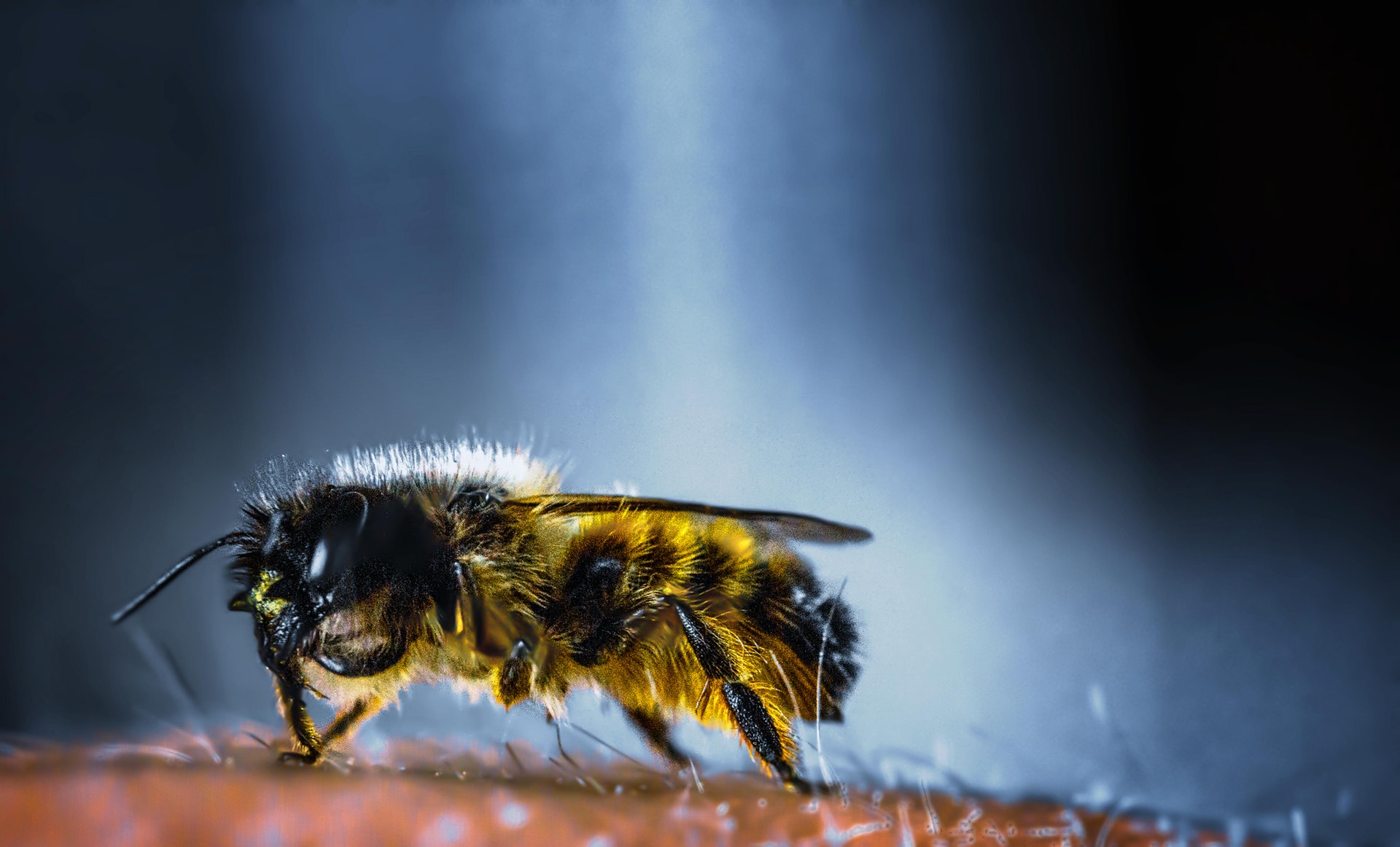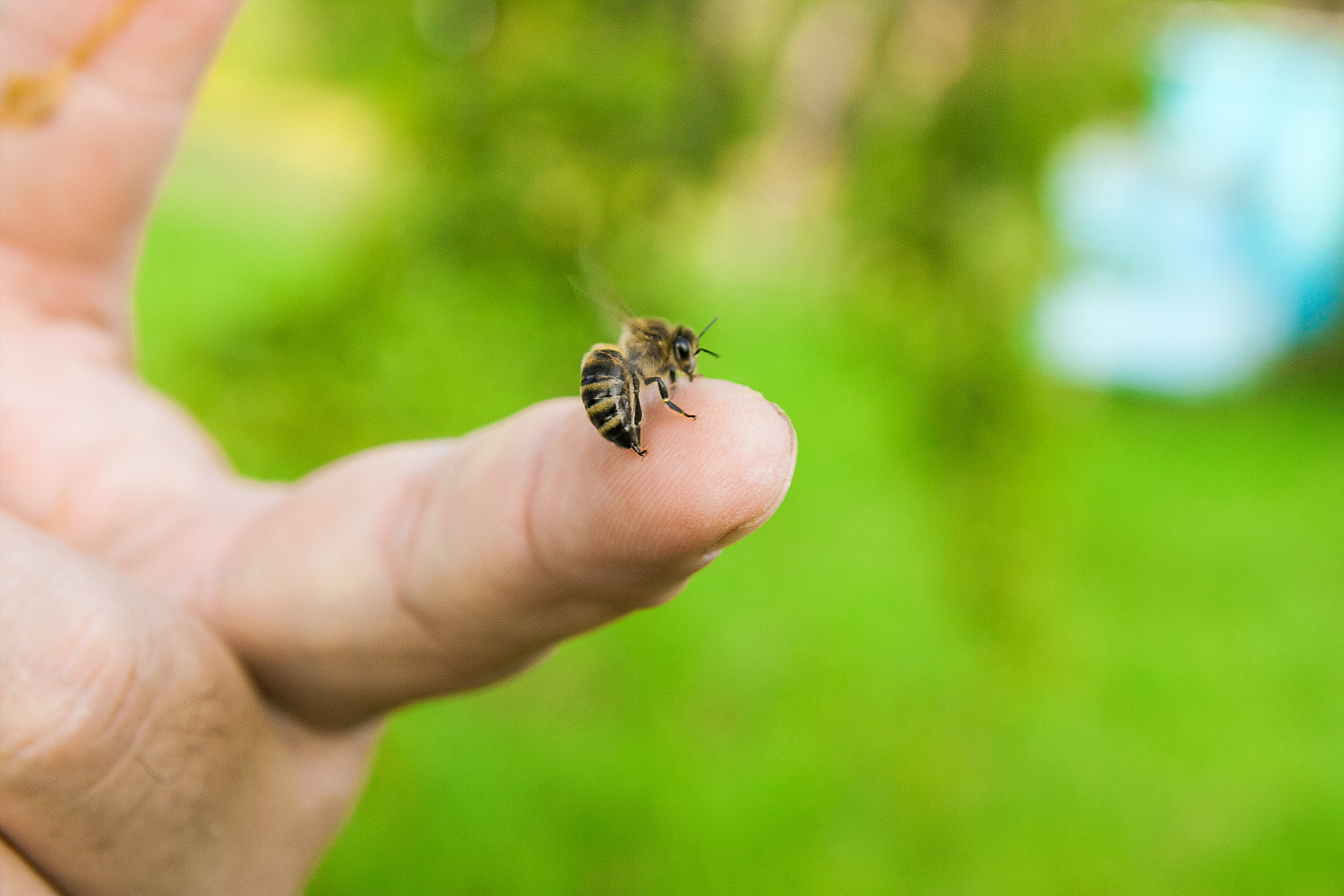What To Do For A Bee Sting (Everything You Need To Know!)
For most of us, a bee sting is just a nuisance. You’re not expecting it, and then bam! Now you’ve got some redness, itchiness, minor swelling around the stung area, but no real serious issues.
However, if you’re allergic to bee stings or have been stung multiple times, bee stings can be problematic and even life-threatening.
When a bee stings you, it leaves behind a venomous toxin in your skin that can cause a minor irritation to most people, while other people are allergic to this toxin and it can cause more serious damage. If the allergic reaction becomes severe, you can experience anaphylactic shock and this will require emergency medical intervention.
Whether the bee sting is just a minor nuisance or you are severely allergic to bee stings, you should know what to do for a bee sting. For traditional home remedies for bee stings, alternative home remedies for bee stings, common symptoms of a bee allergy, emergency medical treatment for bee stings, types of bees in Arizona, common questions about bees, and absolutely everything you need to know about what to do for a bee sting, keep reading!
Traditional Home Remedies For Bee Stings
If you just got stung by a bee and are not sure what to do for a bee sting, check out the following home remedies for bee stings. Thankfully, most bee stings for most people do not extend beyond minor or moderate reactions. However, if you notice difficulty breathing, extensive swelling in the face, shortness of breath, or any other symptoms of bee allergy (read below), then you might need to seek emergency medical treatment for bee stings. Not sure what to do for a bee sting? Keep reading to determine what to do for a minor reaction, a moderate reaction, or if you’re experiencing symptoms of a bee allergy and might need emergency medical treatment.
Minor Reactions
Use fingernails or tweezers to remove the stinger as quickly as possible. It only takes a few seconds for all the venom to leave the stinger and enter your body.
Wash the stung area with soap and water.
Apply a cold compress. Applying ice for 20 minutes every hour will provide a mild relief. Wrap the ice in a towel to keep a barrier between ice and skin.
Moderate Reactions
Remove the stinger promptly.
Wash the affected area with soap and water.
Apply a cold compress.
Take over-the-counter pain relievers, such as ibuprofen (e.g. Motrin IB, Children's Motrin) or acetaminophen (e.g. Tylenol) to ease discomfort.
If the sting is on an arm or leg, elevate it.
To ease redness, itching, and swelling, apply hydrocortisone cream or calamine lotion.
If itching or swelling remains a problem, take an oral antihistamine with diphenhydramine (Benadryl) or chlorpheniramine (Chlor-Trimeton).
Do not scratch the affected area. This will increase itchiness and swelling, as well as increase your risk of infection.
Alternative Home Remedies For Bee Stings
Not interested in the traditional home remedies for bee stings but still need to know what to do for a bee sting?
We’ve got you covered.
Unless you’re allergic to bees or have multiple bee stings, you can treat most bee stings at home. Keep in mind that the following alternative home remedies for bee stings are not supported by scientific research, but are traditions that have been passed down for generations and are commonly used by people who don’t know what to do for a bee sting.
Honey
Honey is believed to help with wound healing, itching and pain of the stung area. To treat a bee sting with honey, apply a small amount to the affected area, cover area with a loose bandage, and leave on for approximately one hour.
Baking Soda
A paste of baking soda and water is believed to neutralize the bee venom to help decrease pain, itching, and swelling. To treat a bee sting with baking soda, apply a thick layer of baking soda paste to the affected area, cover the paste with a bandage, and leave on for 15 minutes. Re-apply as needed.
Apple Cider Vinegar
Apple cider vinegar is also believed to help neutralize the bee venom. To treat a bee sting with apple cider vinegar, soak the stung area in a bowl/basin of apple cider vinegar for approximately 15 minutes. Alternatively, you could soak a bandage or cloth in apple cider vinegar and apply the bandage/cloth to the affected area.
Toothpaste
Though it is unclear why toothpaste helps with bee stings, some believe alkaline toothpaste neutralizes the acidic honeybee venom. To treat a bee sting with toothpaste, dab a small amount on the affected area.
Meat Tenderizer
An enzyme in meat tenderizer, called papain, is believed to help break down the protein that causes pain and itching. To treat a bee sting with meat tenderizer, make a solution of one-part meat tenderizer and four-parts water. Then, apply to the sting site for up to 30 minutes.
Symptoms of Bee Allergy
If you experience any of the following symptoms following the bee sting, you might need to seek medical help and treatment. Pay close attention to your body’s reaction after you’ve been stung. If you experience any of the following symptoms and are not sure what to do for a bee sting, emergency medical treatment (read below) might be the solution for you.
Itching and swelling around eyes
Tongue and throat swelling
Difficulty swallowing
Dry cough
Wheezing or difficulty breathing
Hives, rashes, or generalized itching
Pale skin
Rapid or weak pulse
Drop in blood pressure
Dizziness or fainting
Nausea, vomiting or diarrhea
Shortness of breath
Shock or loss of consciousness
Emergency Medical Treatment for Bee Stings
Not sure what to do for a bee sting and are experiencing some of the symptoms of a bee allergy? There are three “levels” of bee sting allergic reactions to keep in mind.
Mild Allergic Symptoms
Mild allergic symptoms include a rash and itching all over body, but no problems with breathing.
If you think you fall into this category and want to know what to do for a bee sting, this can be treated with an antihistamine or steroids. Some doctors might also inject you with epinephrine (adrenaline).
Treatment can begin either at the scene of the incident or in the ambulance by medical professionals. After a short amount of time and observable improvement, you will most likely be sent home after observation in the emergency department.
Moderate Allergic Reaction
A moderate allergic reaction includes a rash all over the body and mild problems breathing.
If you’re not sure what to do for a bee sting with a moderate allergic reaction, you will most likely be treated with injections of antihistamines, steroids, and epinephrine. These treatments will start at the scene of the infection or in the ambulance by medical professionals.
You will most likely need to be observed for a prolonged period of time in the emergency department. In some cases, you might need to be admitted to the hospital.
Severe Allergic Reaction
A severe allergic reaction includes low blood pressure, swelling throat, limited air getting to the lungs, and serious issues with breathing.
This is a life-threatening situation. Treatment includes placing a breathing tube into your trachea; injections of antihistamines, steroids, and epinephrine; and intravenous fluids.
These treatments can start at the scene or in the ambulance. You will be closely monitored in the emergency department and will most likely be admitted to the hospital.
For individuals who don’t have any evidence of allergic reaction, but who have suffered 10 - 20 bee stings, they might still need prolonged observation in the emergency department or admittance to the hospital. The doctor might order blood tests.
Types of Bees in Arizona (& Their Bee Stings)
In order to know what to do for a bee sting, it is helpful to know all the different types of bees in Arizona and your local area. If you know the types of bees in Arizona, you can know what to do for a bee sting!
Honey Bee
If a honey bee stings you, its stinger is released into your skin, which ultimately kills the honey bee. Contrary to what is believed to be common knowledge, honeybees are the only type of bee that die after they sting. Wasps and other types of bees do not lose their stinger and can sting you multiple times.
Africanized Honey Bee (AHB)
The first AHB colonies arrived in Arizona in the summer of 1993. They are a hybrid of European honey bees and African honey bees. Compared to European honey bees, AHB are more likely to sense a threat from a greater distance away, become more upset with less provocation, and sting an individual a greater number of times. The stings of AHB are not more powerful or more painful than other types of bees, though the AHB are more aggressive than other types of bees.
Bumble Bees
A bumble bee’s stinger has no barbs, unlike a honey bee’s stinger. This means that a bumble bee can sting multiple times. Thus, an angry bumble bee can cause more harm than a honey bee because it can continue to sting, without the stinger coming out in your skin the first time. Though it is possible for the stinger to break off, this does not always result in the death of the bumble bee.
Carpenter Bees
Carpenter bees are commonly confused with bumble bees, due to their similar size and color. Though male carpenter bees can’t sting, they are very aggressive and territorial when it comes to protecting their hive. If humans approach or get too close to their nest, it is not uncommon for the male carpenter bees to swoop down in warning. Though harmless, the male carpenter swoop attacks are intimidating due to the large size of the bee and their loud buzz.
For a more complete list of the different types of bees in Arizona, check out our Pest Control Phoenix page.
Common Questions About Bees
There is a common misconception that all bees sting. However, this is not true: only certain types of bees within a colony are capable of stinging. Beyond that, most bees, even if they’re capable of stinging, don’t sting unless they are provoked in some way. In general, female bees of social and solitary species can sting when threatened, but male bees do not have stingers. For the answers to common questions about bees, including do bumble bees sting?, do carpenter bees sting?, how long do bees live?, keep reading!
#1 Do Bumble Bees Sting?
Yes. The worker bees and queen bee in a bumble bee colony are capable of stinging. Within a bumble bee colony, there are drones (male bees), worker bees (sterile females), and a queen bee. The sterile female worker bees are able to sting because the ovipositor has evolved into a stinger. Generally, a queen bumble bee only uses her stinger to defend against rival queen bees.
#2 Do Carpenter Bees Sting?
Yes. Female carpenter bees have the ability to sting, unless male carpenter bees. Unless their hive is being threatened or they are agitated in some way, it is very unlikely to get stung by female carpenter bees.
If stung by a female carpenter bee, it is very painful. If the stung area is incredibly painful, opt for antihistamines and painkillers to reduce the swelling first. Then, see a doctor if allergic symptoms develop.
#3 How Long Do Bees Live?
The answer to this question depends on the particular type of bee.
Worker Bumble Bees: 2 - 6 weeks
Queen Bumble Bees: 1 year
Male Bumble Bees: 2 weeks
Worker Honey Bees: 122 - 152 days (4 - 6 months)
Queen Honey Bees: 3 - 4 years
Drone Honey Bees: 2 weeks - 4 months
Africanized Honey Bees: 5 - 10 weeks
Male Carpenter Bees: 1 year
And there you have it!
Absolutely everything you need to know about what to do for a bee sting, alternative home remedies for bee stings, common symptoms of a bee allergy, emergency medical treatment for bee stings, types of bees in Arizona, and common questions about bees.







